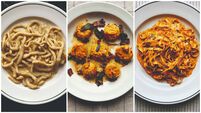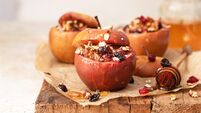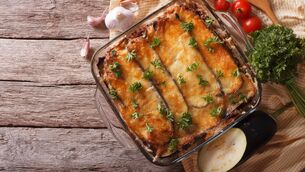The Currabinny Cooks: How to make beans on toast - with a twist

James Kavanagh and William Murray. Picture: Bríd O'Donovan
There seems to always be a rise and fall in the popularity of certain vegetables or food in general.
Kale definitely had its moment in the sun from around 2011 onwards. I do however sense a waning in the kale adoration of late. It still has its place in the now well established vegan food world as a useful source of iron, but in general, there isn’t quite the same intensity of interest.
I feel like it used to be the main ingredient in every cafè and restaurant. I myself, cannot admit to ever having been a huge fan of kale, but like most foods that I don’t like and then do, it is about how you use it. I remain unconvinced that massaging tough kale with lemon juice makes it any better or that it should ever be blitzed into a drinkable green sludge. I have however, slowly but surely, learned ways of using and eating kale that are in fact delicious.
Kale in its natural state, is not exactly unpleasant to eat, I have always thought the strong, earthy and slightly bitter taste was delicous, it is more about how laborious it is to eat. How unsexy it is to chew and chew.
If it's just there, uncooked (or even aggressively massaged) on a plate in front of me, I have to sort of prepare myself for the inevitable effort of having to masticate its fronds and curls into something I can swallow.
It is the same feeling I have for biscuits that are too dry or fruit that is too soft, even if something tastes nice, the texture can ruin it for you.
I have however, grown up a little when it comes to kale. It’s not that I won’t chew it, but there are ways of using it that make it a little less tough and things to pair it with where the toughness is actually appreciated.
I am also reassured by the varied types of kale that are now more widely available. It isn’t just the curly kale, the one that you have to pick out of your teeth after.
Kale is a rather ancient member of the brassica family which counts among its members such lofty specimens like cabbage, broccoli, cauliflower, turnip and mustard. ‘Cavolo Nero’ or Tuscan kale, is a particularly beautiful variety of kale, which is identifiable by its almost inky blue elongated leaves.
Russian kale is mostly pink or red ribbed with oak like leaves which are more delicate that the curly ones, it also has a slightly sweeter taste. Redbor kale is mostly ornamental although its shocking purple frills are in fact very edible, it would need some cooking down in a broth perhaps. Baby kale is also becoming more and more popular, offering a gentler, easier to eat option, requiring less wrestling leaves from stalks.
The following recipes use kale in familiar and sometimes unfamiliar ways, hope you enjoy.
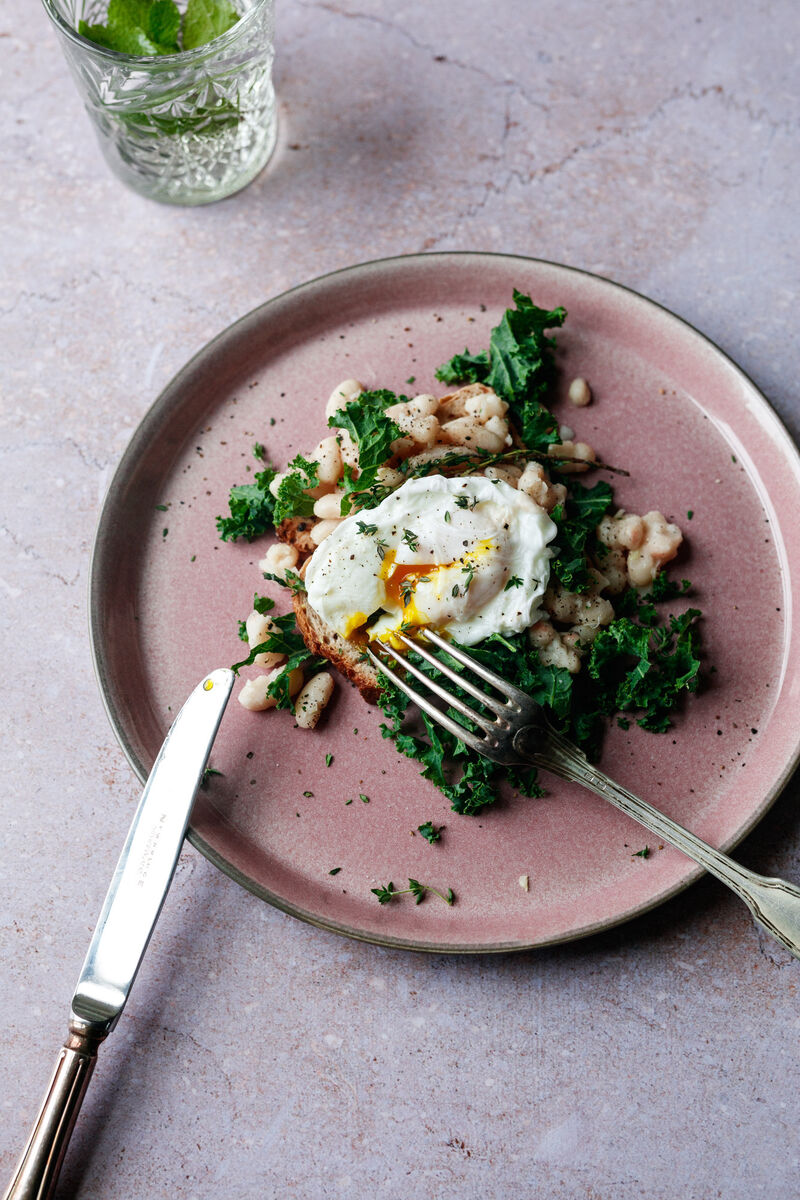
First of all, I do not like baked beans and second of all, my enjoyment of kale is very conditional. I do however always endeavour to prove myself wrong or at least find loopholes in my stubborn particularities. In this recipe, the beans are of the clean, white butterbean variety and definitely are not coated in sugary tomato sauce. The Kale I have used is of the Russian variety and has been sautéed lightly on a hot pan with plenty of garlic.
- 1 can of butterbeans, drained and beans rinsed with cold water
- 2 sprigs of thyme
- 1 bay leaves
- Peel of 1/2 lemon
- Sea salt
- 1 clove of garlic, minced
- Extra virgin olive oil
- 2 slices of sourdough
- Good salty Irish butter
- 2 eggs
- 150g of Russian or curly kale, tough stalks removed
- Zest and juice of 1 lemon
- 1 clove of garlic, sliced thinly
- 80g parmesan, shaved
- Sea salt and cracked black pepper
In a small pot or saucepan, place the beans along with the thyme and bay leaf (tied together with twine), a good glug of olive oil, sea salt, minced garlic and lemon peel, over a medium heat.
Sautee gently until fragrant and the beans are starting to become soft but not to the point of breaking apart. Take off the heat and remove the herbs and lemon peel.
For the kale, sauté with some olive oil and sliced garlic over a medium high heat, squeeze over the juice of 1 small lemon and add its zest to the pan. Season with sea salt. Cook until soft but not totally wilted.
Toast the sourdough, spread generously with butter and then poach the eggs until firm on the outside but with the yolks still nice and runny.
Arrange the toast between two serving plates and dividing the beans and kale between them on top of the toast. Place an egg on each and lastly add some of the shaved parmesan.
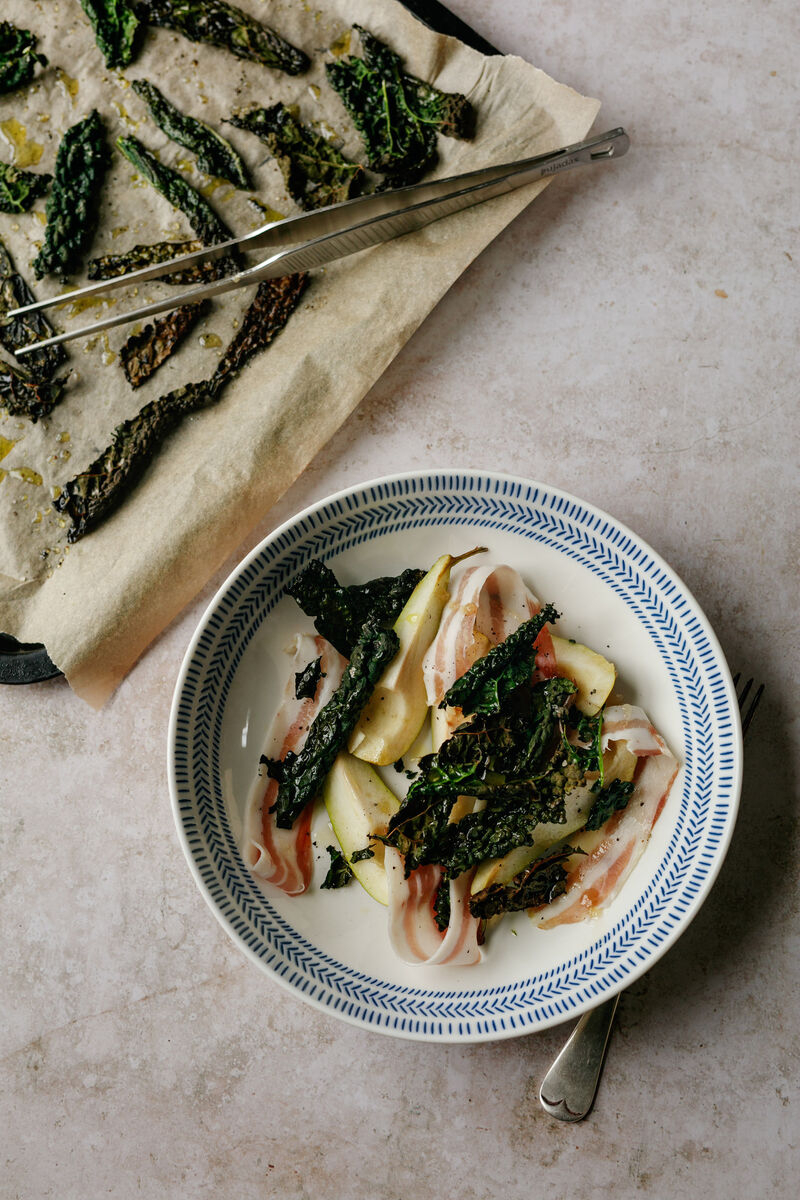
I once bought a food de-humidifier which I think I still have somewhere (possibly lost behind the fridge). I think I got one after getting excited upon seeing all the different vegetables you could turn into chips. Like most of my interactions with anything more complicated than an oven or hob, my experimentations with this contraption churned out endless supplies of oily, soggy bits of shrivelled up veg. After I had recovered from another kitchen endeavour ending in shame and embarrassment I remembered that there is actually a much easier way of making crisped up vegetables or chips. It involves my favourite cooking appliance, the oven. I also think I use less oil this way than what was recommended for the dehumidifier but then again, I did do that completely wrong.
Serves 2
- 100g of ‘cavolo nero’ kale, tougher stalks removed
- 2 tablespoons of olive oil
- 2 pears, cored and cut into quarters or eights
- 8 slices of speck, pancetta or bacon
- 2 teaspoons of honey
- Few sprigs of thyme, leaves only
- Juice of 1/2 lemon
- Sea salt
Preheat the oven to 120C.
Wash the cavolo nero and remove any of the tougher, wider stalks or ends of stalks. You can leave the stalks on the smaller, more tender leaves. Any of the larger leaves, you can tear into smaller pieces. Pat the leaves dry and place in a bowl with 1 tablespoon of the olive oil, tossing to lightly coat each leaf. Season with a good pinch or two of sea salt.
Line a baking tray with parchment paper and place the leaves in a single layer on the baking tray.
Place in the oven for 25-30 minutes, after which the kale should have crisped up nicely. Carefully remove the leaves from the tray to cool. They might shatter or break apart easily in their crisped up state.
In a frying pan, fry the speck, bacon or pancetta until suitably crisp.
In two shallow bowls, arrange the pears and bacon. Squeeze over the juice of half a lemon.
Arrange the kale chips in and amongst the other ingredients and drizzle over the two teaspoons of honey. Lastly, sprinkle over the thyme leaves and serve. Simple and delicious.
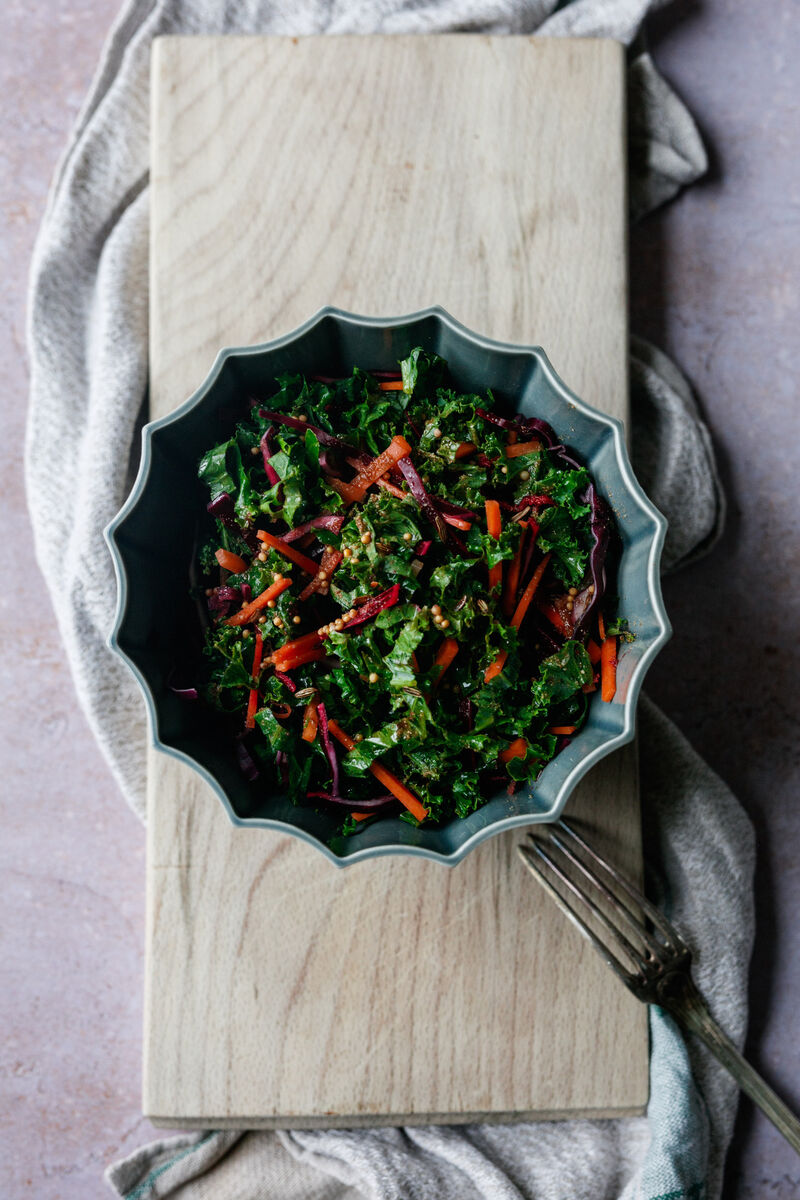
For this you can use any type of Kale you like. I used curly kale, which is fine when shredded and coated in the dressing. This is best eaten after sitting, covered in the fridge overnight to allow everything to soften a little and the flavours penetrate.
- A good bunch of Kale, stalks removed
- 1/2 a small red cabbage, outer leaves discarded
- 1 large carrot, peeled
- Handful of parsley, chopped finely
- Handful of walnuts, chopped
- 1 tablespoon of seeded mustard
- 1 tablespoon of cider vinegar
- 1 tablespoon of olive oil
- Juice of 1 lemon
- Sea salt
Shred the kale as finely as you can manage with a big sharp knife. Do the same with the cabbage and then cut the carrot into thin matchsticks. Place in a large bowl and sprinkle generously enough with sea salt and squeeze over the juice of 1 lemon, mixing it into the ingredients until everything is coated.
Whisk together the mustard, olive oil and vinegar and pour into the mixing bowl. Mix through along with the chopped walnuts. Check that the seasoning is right and then cover and place in the fridge.
You can transfer the slaw to a jar if you like.


